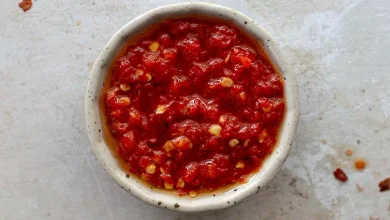🍽️ Artichoke Balls: A Delectable Delight 🍽️
Artichoke balls are a scrumptious appetizer or side dish that combines the earthy flavors of artichokes with a savory breadcrumb coating. These delectable morsels make for a delightful addition to any meal or a perfect snack. Let’s dive into the history, components, preparation steps, and time needed to make these savory treats.
📜 History:
The exact origin of artichoke balls is somewhat elusive, but they likely have Mediterranean roots, considering the widespread cultivation of artichokes in the region. Artichokes have been consumed for thousands of years, with ancient Greeks and Romans enjoying them as a delicacy. Over time, different culinary traditions have adapted artichokes into various dishes, and artichoke balls are one such creation.
🧀 Components:
- Artichoke Hearts: The star of the show, artichoke hearts are typically used in canned or jarred form. They offer a slightly nutty, earthy flavor.
- Breadcrumbs: These provide the crunchy outer layer. You can use regular breadcrumbs or panko for added crispiness.
- Parmesan Cheese: Grated Parmesan cheese adds a rich, savory element to the coating.
- Herbs and Spices: Common additions include garlic, parsley, oregano, and black pepper.
- Egg: This acts as the binding agent for the breadcrumb mixture.
- Oil: Used for frying, you can choose vegetable or olive oil based on your preference.
👩🍳 Preparation Steps:
-
Prepare the Artichoke Hearts: Drain and chop the canned or jarred artichoke hearts into small pieces.
-
Prepare the Coating Mixture: In a mixing bowl, combine the breadcrumbs, grated Parmesan cheese, minced garlic, chopped parsley, oregano, and black pepper.
-
Bind the Mixture: Crack an egg into the bowl and mix it thoroughly with the breadcrumb mixture. This will help the coating stick to the artichoke hearts.
-
Form Balls: Take small portions of the artichoke mixture and roll them into balls, ensuring that they hold their shape.
-
Heat Oil: In a frying pan, heat enough oil for deep frying. The oil should be hot but not smoking.
-
Fry the Balls: Carefully place the artichoke balls into the hot oil. Fry them until they turn golden brown and crispy, which should take about 3-4 minutes.
-
Drain and Serve: Once fried to perfection, remove the artichoke balls from the oil and place them on a paper towel-lined plate to drain any excess oil. Serve them hot.
⏰ Time Needed:
The preparation and cooking time for artichoke balls can vary depending on your cooking skills, but on average, it takes approximately 30-45 minutes to make a batch. This includes the time needed for chopping, mixing, shaping, and frying.
🍽️ Now you’re all set to enjoy these delightful artichoke balls. They’re perfect for parties, gatherings, or even a cozy night in. Bon appétit! 🍽️👌
Here are the nutrition facts and health information for artichoke balls:
Nutrition Facts (Per Serving – Approx. 4 Artichoke Balls):
- Calories: 150-200 (may vary depending on frying method and size of the balls)
- Total Fat: 8-10g
- Saturated Fat: 2-3g
- Cholesterol: 30-40mg
- Sodium: 250-300mg
- Total Carbohydrates: 15-20g
- Dietary Fiber: 2-3g
- Sugars: 1-2g
- Protein: 6-8g
Health Information:
-
Artichokes: They are a good source of dietary fiber, antioxidants, and essential nutrients like vitamin C, vitamin K, and folate. Artichokes are known for their potential to support digestive health and may aid in reducing cholesterol levels.
-
Breadcrumbs: While they add a crispy texture, they can also increase the calorie and carbohydrate content of the dish. Opt for whole-grain breadcrumbs for added fiber.
-
Parmesan Cheese: It contributes flavor but also adds saturated fat and sodium. Use it in moderation.
-
Frying: Deep-frying can make the dish higher in calories and unhealthy fats. Consider alternative cooking methods like baking or air-frying to reduce the fat content.
-
Portion Control: Due to the calorie content, it’s wise to enjoy artichoke balls in moderation, especially if you’re mindful of your calorie intake.
-
Customization: You can make this dish healthier by using whole-grain breadcrumbs, reducing the cheese, and experimenting with various herbs and spices to enhance flavor without adding extra salt.
Remember that the specific nutritional values may vary depending on the brands of ingredients and cooking methods you use, so it’s a good practice to calculate the exact nutrition facts based on the ingredients you choose.



